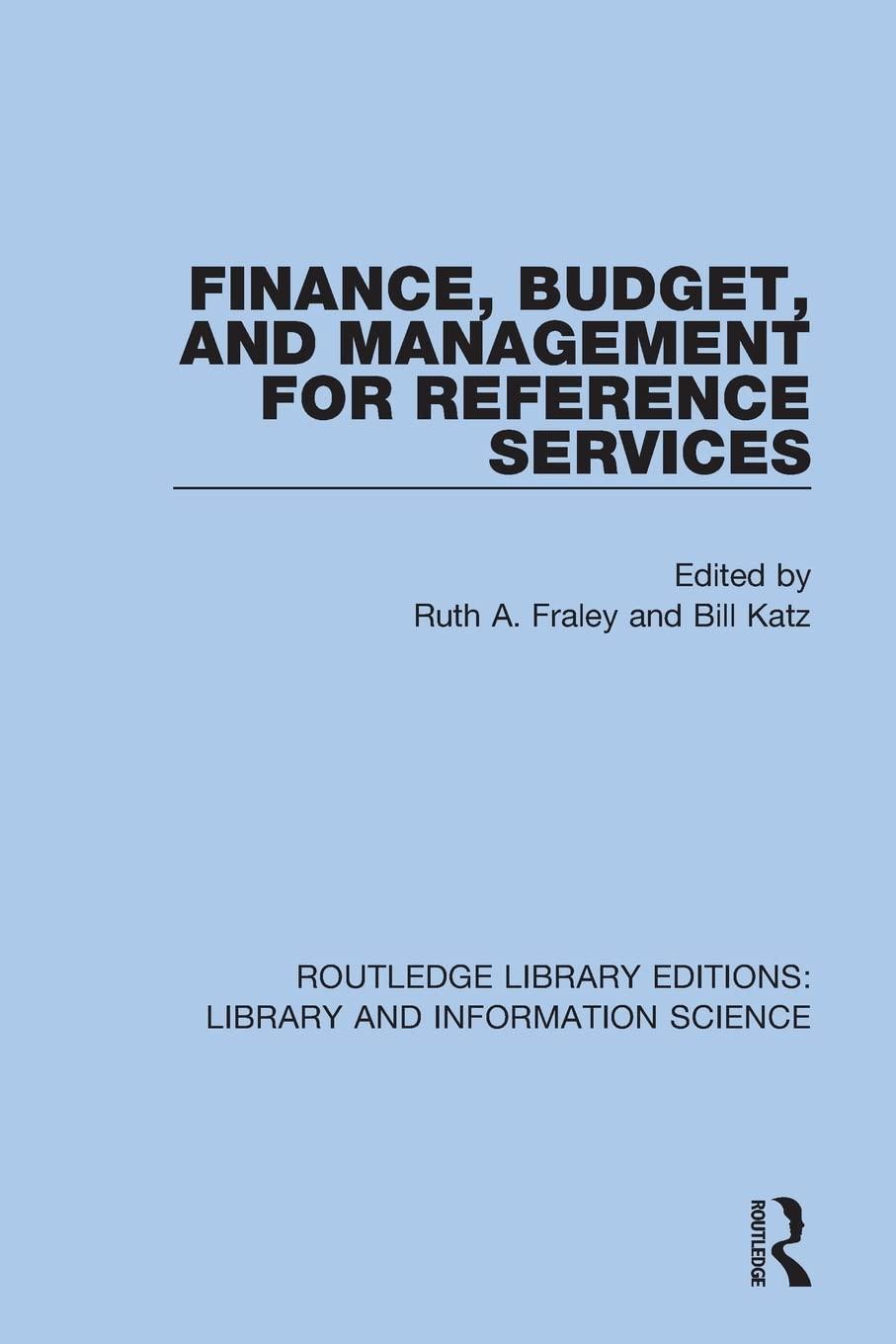

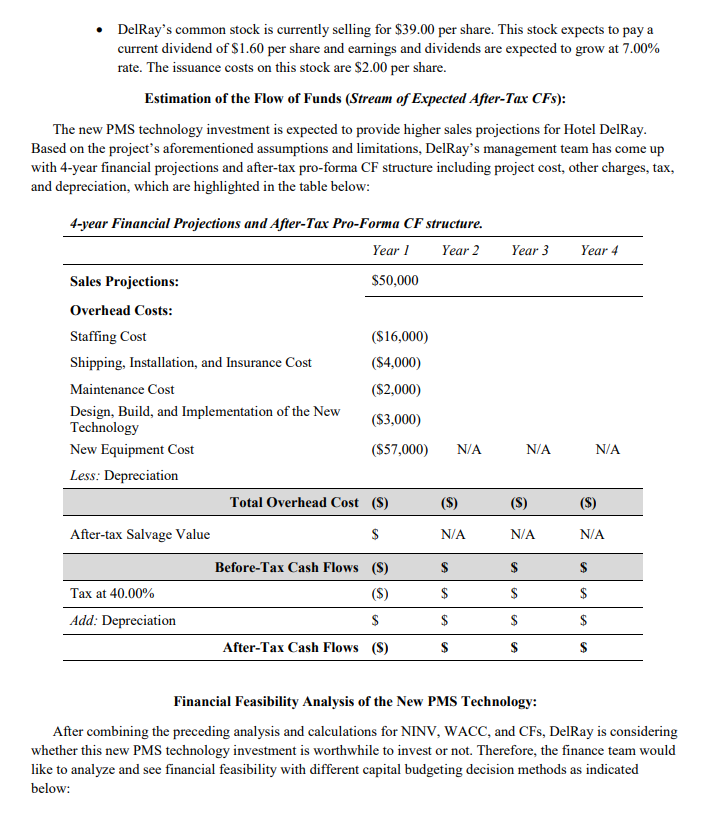
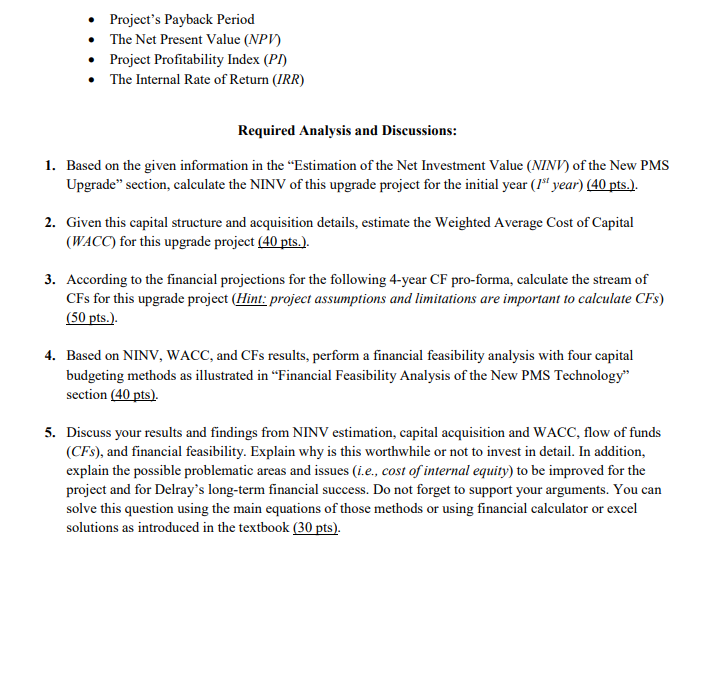
the answer mode
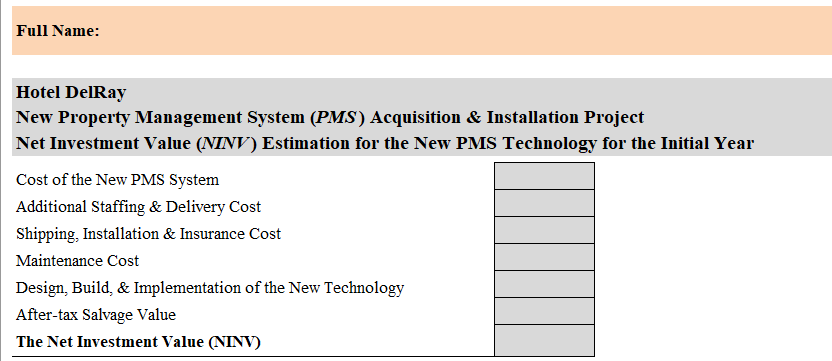
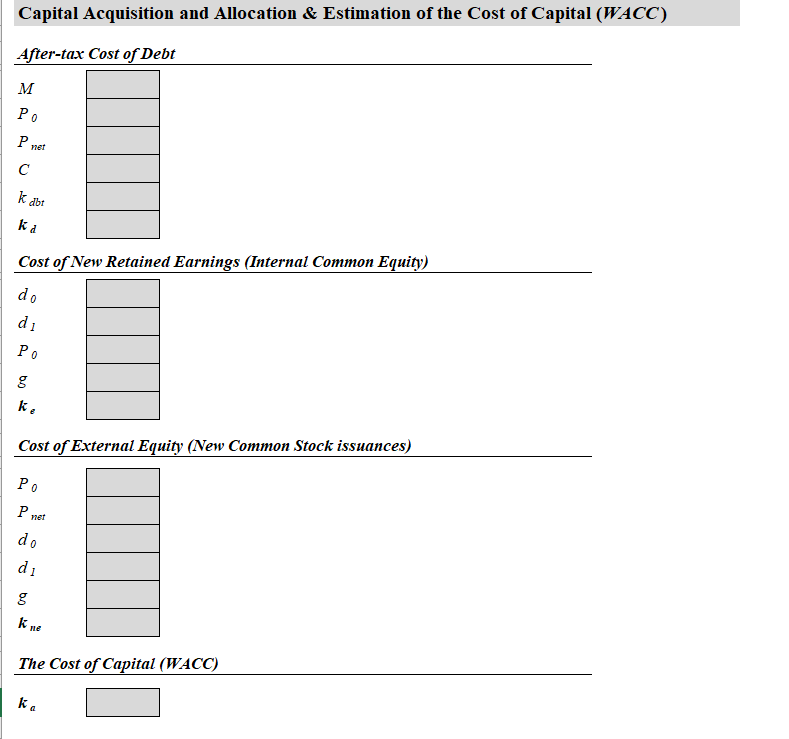
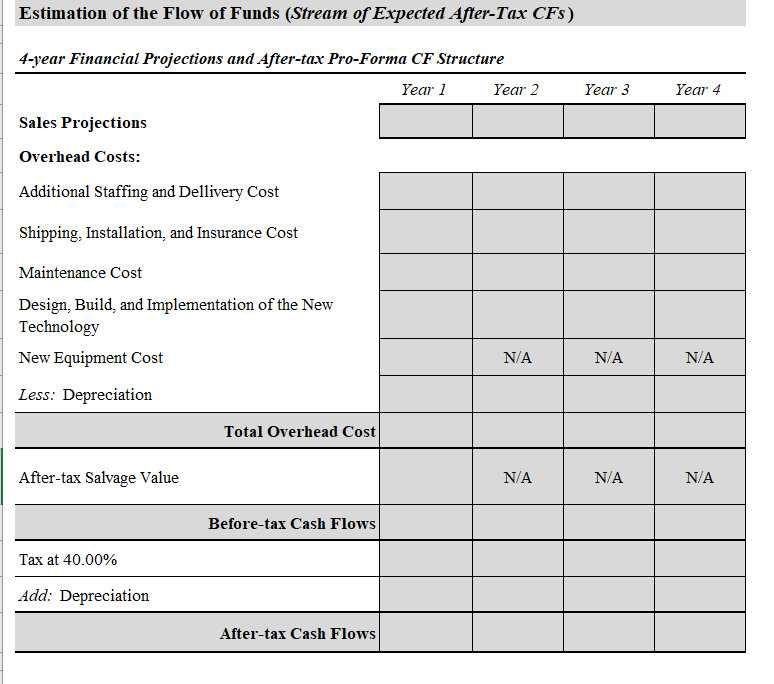

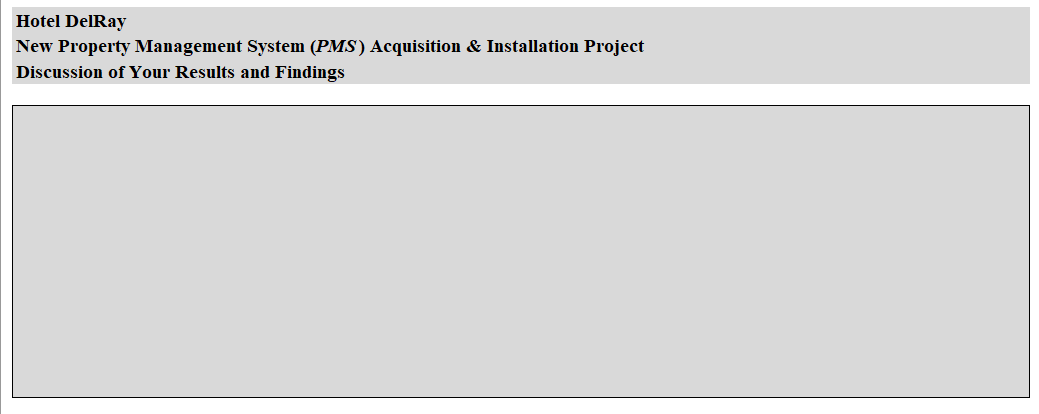
Hotel DelRay, Brussels New Property Management System (PMS) Acquisition & Installation Project Capital Allocation and Acquisition Plan & Financial Feasibility Study Background & History of DelRay! Hotel DelRay is located at the heart of the city of Brussels, in Belgium. Brussels is a major hub for international politics, a home for several international organizations and diplomats, and a fortress for European Union Institutions. The importance of the city not only elevates the financial and economic infrastructure, also increases the volume of government and business travelers from all over the world. Thus, lodging establishments in the city of Brussels have recently been facing fierce local and international competition. DelRay, which is owned by Italian BD&T Hospitality Investment Company, has been in Brussels' local lodging industry for the past twenty-five plus years. DelRay is one of the most popular and demanded hotels in Brussels by the international government institutions due to its strategic position. The hotel's success is largely due to its great security procedures and they specialize in providing highly quality service based on international government protocols. Since its grand opening day, DelRay has had excellent records of growth figures, occupancy levels, and financial performance regardless of the time or the season of the year. However, in recent years, DelRay has started to observe inefficiencies in its operations and poor financial outcomes due to conventional and outdated operation systems in the property. Hence, the chairperson of BD&T has a recent discussion and a meeting with DelRay's GM about this issue and the chairperson of BD&T has suggested an upgrade the existing but not fully effective property management system (PMS). A critical part of this upgrade project is to come up with the optimal capital allocation and acquisition plan and the financial feasibility assessment based on the project's expected cash flows in the future. In this important meeting, BD&T and DelRay finance and accounting team has discussed and agreed on the project essentials as presented below. As UCF's Rosen College graduate and the director of Finance at DelRay, you are in charge of this capital acquisition and feasibility study for the expansion project. Project Assumptions & Limitations All of the estimations for the capital allocations and acquisition along with the financial feasibility will be based on the project assumptions and limitations as follows: Due to the new technology investment, sales are expected to increase on an incremental basis of $10,000 increase every year for the next 4 years. All of the overhead costs (except for the new equipment cost) are estimated on an incremental basis of $1,500 increase every year for the next 4 years. Corporate tax bracket applied to DelRay is set at 40.00%. Deprecation of the new PMS technology is estimated on a straight-line method, which is set at $1,000 for the next 4 years. Estimated cash flows (CFS) are measured on an after-tax basis. Cost of the new asset and the underlying overhead costs will be carried over to year 1 as shown in the 4-year financial projections and after-tax pro-forma CF structure. All project milestones are performed in accordance with the project completion schedule and there are no delays in project tasks. All transactions are closed on annual basis with no carry-over to subsequent years. The cost of capital estimation requires the cost of permanent sources of both short and long-term capital as explained later in the write-up. Cost of capital for this project is measured by the Weighted Average Cost of Capital (WACC). Estimation of the Net Investment Value (NINV) of the New PMS Upgrade: This upgrade project is going to give an opportunity to Hotel DelRay to replace the older PMS with the new technology so that the hotel can operate better to maximize their profit margins. Purchasing activities and processes of this new PMS technology will cost DelRay $57,000. In addition to the cost of the new asset, the old PMS technology can be sold for $10,000 in the market with a book value of $8,000. Hence, after-tax salvage value from the replaced assets is established based on the difference between market and book value of the old asset along with the effect of tax. Suppose that the new PMS technology will not cause DelRay to increase its net working capital. Further, additional charges and estimations for this new PMS technology for the initial year (15 year) are highlighted as follows: Additional Staffing & Delivery Cost: $16,000 Shipping, Installation and Insurance Cost: $4,000 Maintenance Cost: $2,000 Design, Build, and Implementation of the New Technology: $3,000 Capital Acquisition and Allocation & Estimation of the Cost of Capital (WACC): Imagine that DelRay is going to blend different capital sources to raise the funds needed for this upgrade project. The finance team of DelRay comes up with the optimal capital structure to finance this project by blending 40.00% debt (long-term corporate bonds), 30.00% new retained earnings as internal equity (internal common equity), and 30.00% external equity (new common stock issuances). Assume that DelRay is not going to use preferred stock to find this upgrade project. The details of the capital acquisition and allocation are as follows: DelRay wants to issue 10-year corporate bond at a $1,000 price with a 15.00% coupon rate and the issuance cost of each bond is $20 for each bond. Kabe" is estimated as 6.84%. DelRay wants to reinvest its retained earnings by selling for its common stock for $56.00. This stock pays a current dividend of $0.20 per share and earnings and dividends are expected to grow at 10.00% rate into foreseeable future. DelRay's common stock is currently selling for $39.00 per share. This stock expects to pay a current dividend of $1.60 per share and earnings and dividends are expected to grow at 7.00% rate. The issuance costs on this stock are $2.00 per share. Estimation of the Flow of Funds (Stream of Expected After-Tax CFs): The new PMS technology investment is expected to provide higher sales projections for Hotel DelRay. Based on the project's aforementioned assumptions and limitations, DelRay's management team has come up with 4-year financial projections and after-tax pro-forma CF structure including project cost, other charges, tax, and depreciation, which are highlighted in the table below: Year 3 Year 4 4-year Financial Projections and After-Tax Pro-Forma CF structure. Year 1 Year 2 Sales Projections: $50,000 Overhead Costs: Staffing Cost ($16,000) Shipping, Installation, and Insurance Cost ($4,000) Maintenance Cost ($2,000) Design, Build, and Implementation of the New ($3,000) Technology New Equipment Cost ($57,000) N/A Less: Depreciation Total Overhead Cost (S) ($) N/A N/A () ($) N/A N/A N/A $ $ After-tax Salvage Value $ Before-Tax Cash Flows ($) Tax at 40.00% ($) Add: Depreciation $ After-Tax Cash Flows ($) $ $ $ $ $ $ $ Financial Feasibility Analysis of the New PMS Technology: After combining the preceding analysis and calculations for NINV, WACC, and CFs, DelRay is considering whether this new PMS technology investment is worthwhile to invest or not. Therefore, the finance team would like to analyze and see financial feasibility with different capital budgeting decision methods as indicated below: Project's Payback Period The Net Present Value (NPV) Project Profitability Index (PT) The Internal Rate of Return (IRR) Required Analysis and Discussions: 1. Based on the given information in the Estimation of the Net Investment Value (NINT) of the New PMS Upgrade section, calculate the NINV of this upgrade project for the initial year (15 year) (40 pts.). 2. Given this capital structure and acquisition details, estimate the Weighted Average Cost of Capital (WACC) for this upgrade project (40 pts.). 3. According to the financial projections for the following 4-year CF pro-forma, calculate the stream of CFs for this upgrade project (Hint: project assumptions and limitations are important to calculate CFS) (50 pts.) 4. Based on NINV, WACC, and CFs results, perform a financial feasibility analysis with four capital budgeting methods as illustrated in Financial Feasibility Analysis of the New PMS Technology" section (40 pts), 5. Discuss your results and findings from NINV estimation, capital acquisition and WACC, flow of funds (CFs), and financial feasibility. Explain why is this worthwhile or not to invest in detail. In addition, explain the possible problematic areas and issues (i.e., cost of internal equity) to be improved for the project and for Delray's long-term financial success. Do not forget to support your arguments. You can solve this question using the main equations of those methods or using financial calculator or excel solutions as introduced in the textbook (30 pts). Full Name: Hotel DelRay New Property Management System (PMS) Acquisition & Installation Project Net Investment Value (NINV) Estimation for the New PMS Technology for the Initial Year Cost of the New PMS System Additional Staffing & Delivery Cost Shipping, Installation & Insurance Cost Maintenance Cost Design, Build, & Implementation of the New Technology After-tax Salvage Value The Net Investment Value (NINV) Capital Acquisition and Allocation & Estimation of the Cost of Capital (WACC) After-tax Cost of Debt M PO P net C kabt ka Cost of New Retained Earnings (Internal Common Equity) do d] Po g Cost of External Equity (New Common Stock issuances) mer do di g k ne The Cost of Capital (WACC) ka Estimation of the Flow of Funds (Stream of Expected After-Tax CFs) 4-year Financial Projections and After-tax Pro-Forma CF Structure Year 1 Year 2 Year 3 Year 4 Sales Projections Overhead Costs: Additional Staffing and Dellivery Cost Shipping, Installation, and Insurance Cost Maintenance Cost Design, Build, and Implementation of the New Technology New Equipment Cost Less: Depreciation N/A N/A N/A Total Overhead Cost After-tax Salvage Value N/A N/A N/A Before-tax Cash Flows Tax at 40.00% Add: Depreciation After-tax Cash Flows Hotel DelRay New Property Management System (PMS) Acquisition & Installation Project Financial Feasibility Analysis Year's After-tax CFS Cumulative CFS 0 1 2 3 4 WACC 0.00% Project's Payback Period The Net Present value (NPV) Project Profitability Index (PI) The Internal Rate of Return (IRR) Hotel DelRay New Property Management System (PMS) Acquisition & Installation Project Discussion of Your Results and Findings Hotel DelRay, Brussels New Property Management System (PMS) Acquisition & Installation Project Capital Allocation and Acquisition Plan & Financial Feasibility Study Background & History of DelRay! Hotel DelRay is located at the heart of the city of Brussels, in Belgium. Brussels is a major hub for international politics, a home for several international organizations and diplomats, and a fortress for European Union Institutions. The importance of the city not only elevates the financial and economic infrastructure, also increases the volume of government and business travelers from all over the world. Thus, lodging establishments in the city of Brussels have recently been facing fierce local and international competition. DelRay, which is owned by Italian BD&T Hospitality Investment Company, has been in Brussels' local lodging industry for the past twenty-five plus years. DelRay is one of the most popular and demanded hotels in Brussels by the international government institutions due to its strategic position. The hotel's success is largely due to its great security procedures and they specialize in providing highly quality service based on international government protocols. Since its grand opening day, DelRay has had excellent records of growth figures, occupancy levels, and financial performance regardless of the time or the season of the year. However, in recent years, DelRay has started to observe inefficiencies in its operations and poor financial outcomes due to conventional and outdated operation systems in the property. Hence, the chairperson of BD&T has a recent discussion and a meeting with DelRay's GM about this issue and the chairperson of BD&T has suggested an upgrade the existing but not fully effective property management system (PMS). A critical part of this upgrade project is to come up with the optimal capital allocation and acquisition plan and the financial feasibility assessment based on the project's expected cash flows in the future. In this important meeting, BD&T and DelRay finance and accounting team has discussed and agreed on the project essentials as presented below. As UCF's Rosen College graduate and the director of Finance at DelRay, you are in charge of this capital acquisition and feasibility study for the expansion project. Project Assumptions & Limitations All of the estimations for the capital allocations and acquisition along with the financial feasibility will be based on the project assumptions and limitations as follows: Due to the new technology investment, sales are expected to increase on an incremental basis of $10,000 increase every year for the next 4 years. All of the overhead costs (except for the new equipment cost) are estimated on an incremental basis of $1,500 increase every year for the next 4 years. Corporate tax bracket applied to DelRay is set at 40.00%. Deprecation of the new PMS technology is estimated on a straight-line method, which is set at $1,000 for the next 4 years. Estimated cash flows (CFS) are measured on an after-tax basis. Cost of the new asset and the underlying overhead costs will be carried over to year 1 as shown in the 4-year financial projections and after-tax pro-forma CF structure. All project milestones are performed in accordance with the project completion schedule and there are no delays in project tasks. All transactions are closed on annual basis with no carry-over to subsequent years. The cost of capital estimation requires the cost of permanent sources of both short and long-term capital as explained later in the write-up. Cost of capital for this project is measured by the Weighted Average Cost of Capital (WACC). Estimation of the Net Investment Value (NINV) of the New PMS Upgrade: This upgrade project is going to give an opportunity to Hotel DelRay to replace the older PMS with the new technology so that the hotel can operate better to maximize their profit margins. Purchasing activities and processes of this new PMS technology will cost DelRay $57,000. In addition to the cost of the new asset, the old PMS technology can be sold for $10,000 in the market with a book value of $8,000. Hence, after-tax salvage value from the replaced assets is established based on the difference between market and book value of the old asset along with the effect of tax. Suppose that the new PMS technology will not cause DelRay to increase its net working capital. Further, additional charges and estimations for this new PMS technology for the initial year (15 year) are highlighted as follows: Additional Staffing & Delivery Cost: $16,000 Shipping, Installation and Insurance Cost: $4,000 Maintenance Cost: $2,000 Design, Build, and Implementation of the New Technology: $3,000 Capital Acquisition and Allocation & Estimation of the Cost of Capital (WACC): Imagine that DelRay is going to blend different capital sources to raise the funds needed for this upgrade project. The finance team of DelRay comes up with the optimal capital structure to finance this project by blending 40.00% debt (long-term corporate bonds), 30.00% new retained earnings as internal equity (internal common equity), and 30.00% external equity (new common stock issuances). Assume that DelRay is not going to use preferred stock to find this upgrade project. The details of the capital acquisition and allocation are as follows: DelRay wants to issue 10-year corporate bond at a $1,000 price with a 15.00% coupon rate and the issuance cost of each bond is $20 for each bond. Kabe" is estimated as 6.84%. DelRay wants to reinvest its retained earnings by selling for its common stock for $56.00. This stock pays a current dividend of $0.20 per share and earnings and dividends are expected to grow at 10.00% rate into foreseeable future. DelRay's common stock is currently selling for $39.00 per share. This stock expects to pay a current dividend of $1.60 per share and earnings and dividends are expected to grow at 7.00% rate. The issuance costs on this stock are $2.00 per share. Estimation of the Flow of Funds (Stream of Expected After-Tax CFs): The new PMS technology investment is expected to provide higher sales projections for Hotel DelRay. Based on the project's aforementioned assumptions and limitations, DelRay's management team has come up with 4-year financial projections and after-tax pro-forma CF structure including project cost, other charges, tax, and depreciation, which are highlighted in the table below: Year 3 Year 4 4-year Financial Projections and After-Tax Pro-Forma CF structure. Year 1 Year 2 Sales Projections: $50,000 Overhead Costs: Staffing Cost ($16,000) Shipping, Installation, and Insurance Cost ($4,000) Maintenance Cost ($2,000) Design, Build, and Implementation of the New ($3,000) Technology New Equipment Cost ($57,000) N/A Less: Depreciation Total Overhead Cost (S) ($) N/A N/A () ($) N/A N/A N/A $ $ After-tax Salvage Value $ Before-Tax Cash Flows ($) Tax at 40.00% ($) Add: Depreciation $ After-Tax Cash Flows ($) $ $ $ $ $ $ $ Financial Feasibility Analysis of the New PMS Technology: After combining the preceding analysis and calculations for NINV, WACC, and CFs, DelRay is considering whether this new PMS technology investment is worthwhile to invest or not. Therefore, the finance team would like to analyze and see financial feasibility with different capital budgeting decision methods as indicated below: Project's Payback Period The Net Present Value (NPV) Project Profitability Index (PT) The Internal Rate of Return (IRR) Required Analysis and Discussions: 1. Based on the given information in the Estimation of the Net Investment Value (NINT) of the New PMS Upgrade section, calculate the NINV of this upgrade project for the initial year (15 year) (40 pts.). 2. Given this capital structure and acquisition details, estimate the Weighted Average Cost of Capital (WACC) for this upgrade project (40 pts.). 3. According to the financial projections for the following 4-year CF pro-forma, calculate the stream of CFs for this upgrade project (Hint: project assumptions and limitations are important to calculate CFS) (50 pts.) 4. Based on NINV, WACC, and CFs results, perform a financial feasibility analysis with four capital budgeting methods as illustrated in Financial Feasibility Analysis of the New PMS Technology" section (40 pts), 5. Discuss your results and findings from NINV estimation, capital acquisition and WACC, flow of funds (CFs), and financial feasibility. Explain why is this worthwhile or not to invest in detail. In addition, explain the possible problematic areas and issues (i.e., cost of internal equity) to be improved for the project and for Delray's long-term financial success. Do not forget to support your arguments. You can solve this question using the main equations of those methods or using financial calculator or excel solutions as introduced in the textbook (30 pts). Full Name: Hotel DelRay New Property Management System (PMS) Acquisition & Installation Project Net Investment Value (NINV) Estimation for the New PMS Technology for the Initial Year Cost of the New PMS System Additional Staffing & Delivery Cost Shipping, Installation & Insurance Cost Maintenance Cost Design, Build, & Implementation of the New Technology After-tax Salvage Value The Net Investment Value (NINV) Capital Acquisition and Allocation & Estimation of the Cost of Capital (WACC) After-tax Cost of Debt M PO P net C kabt ka Cost of New Retained Earnings (Internal Common Equity) do d] Po g Cost of External Equity (New Common Stock issuances) mer do di g k ne The Cost of Capital (WACC) ka Estimation of the Flow of Funds (Stream of Expected After-Tax CFs) 4-year Financial Projections and After-tax Pro-Forma CF Structure Year 1 Year 2 Year 3 Year 4 Sales Projections Overhead Costs: Additional Staffing and Dellivery Cost Shipping, Installation, and Insurance Cost Maintenance Cost Design, Build, and Implementation of the New Technology New Equipment Cost Less: Depreciation N/A N/A N/A Total Overhead Cost After-tax Salvage Value N/A N/A N/A Before-tax Cash Flows Tax at 40.00% Add: Depreciation After-tax Cash Flows Hotel DelRay New Property Management System (PMS) Acquisition & Installation Project Financial Feasibility Analysis Year's After-tax CFS Cumulative CFS 0 1 2 3 4 WACC 0.00% Project's Payback Period The Net Present value (NPV) Project Profitability Index (PI) The Internal Rate of Return (IRR) Hotel DelRay New Property Management System (PMS) Acquisition & Installation Project Discussion of Your Results and Findings















